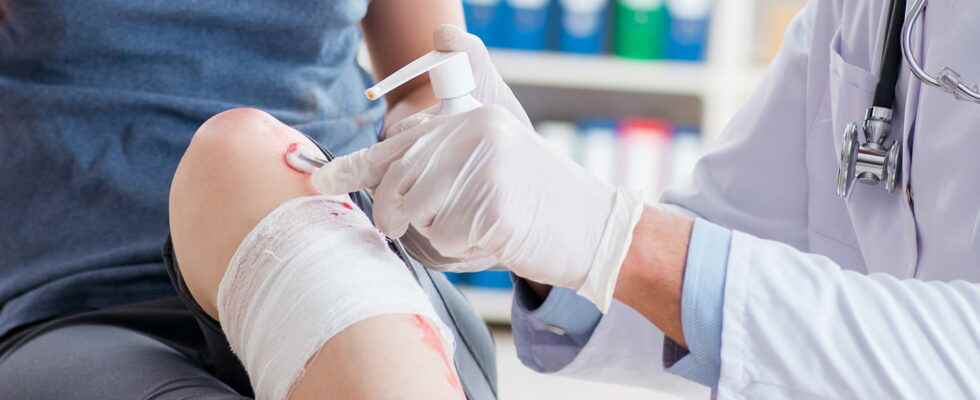This procedure aims to eliminate pathogens present on and in the body, in order to treat infections. But it must follow a very specific protocol to be effective. The explanations of Dr. Nina Roos, dermatologist.
Definition: what is antisepsis?
Antisepsis is a technique performed using antiseptic productsallowing the temporary elimination of all micro-organisms (bacteria, mushroomsviruses) present on the internal and external surfaces of the body, to prevent or treat infections. Antisepsis made it possible to very significantly reduce the number of deaths due to infections, whether following operations or following childbirth. Antisepsis dates only from the end of the 19th century. It does not preserve the endermic flora, contrary to asepsis which prevents the contribution of new germs.
What is skin antisepsis?
“This is a cleaning the skin to eliminate microorganisms present on its surface, explains Dr. Nina Roos. VSThis gesture can in particular be practiced on a wound in order to promote its healing“.
What is the difference with asepsis?
“Asepsis corresponds to all of the preventive methods that eliminate microorganisms present on a person or a surface (sterilization, disinfection, etc.), says Dr. Roos. By preventing the introduction of microbes into the body, it prevents infectious diseases.
What is antisepsis used for?
By eliminating bacteria, fungi and other pathogenic agents present on an area of skin or mucous membrane, antisepsis makes it possible to prevent and treat infections.
Technique: what are the 4 stages of antisepsis?
Good antisepsis is based on a 4-step protocol:
1. Washing the area. “When the wound is soiled, this makes it possible to carry out a debridement, in order to eliminate possible dirt“, indicates the dermatologist. She practices with a foaming antiseptic.
2. Rinse. This allows the evacuation of dirt, dander, germs… as well as the rest of the detergent.
3. Drying. “The skin should be dried with a sterile compress“, notes our expert.
4. Passage of an antiseptic product and drying. “When the area is clean, apply a solution of Chlorhexidine aqueous in order to eliminate the germs remaining after the realization of the preceding stages“, adds Dr. Roos.
Thanks to Dr. Nina Roos, dermatologist in Paris.
